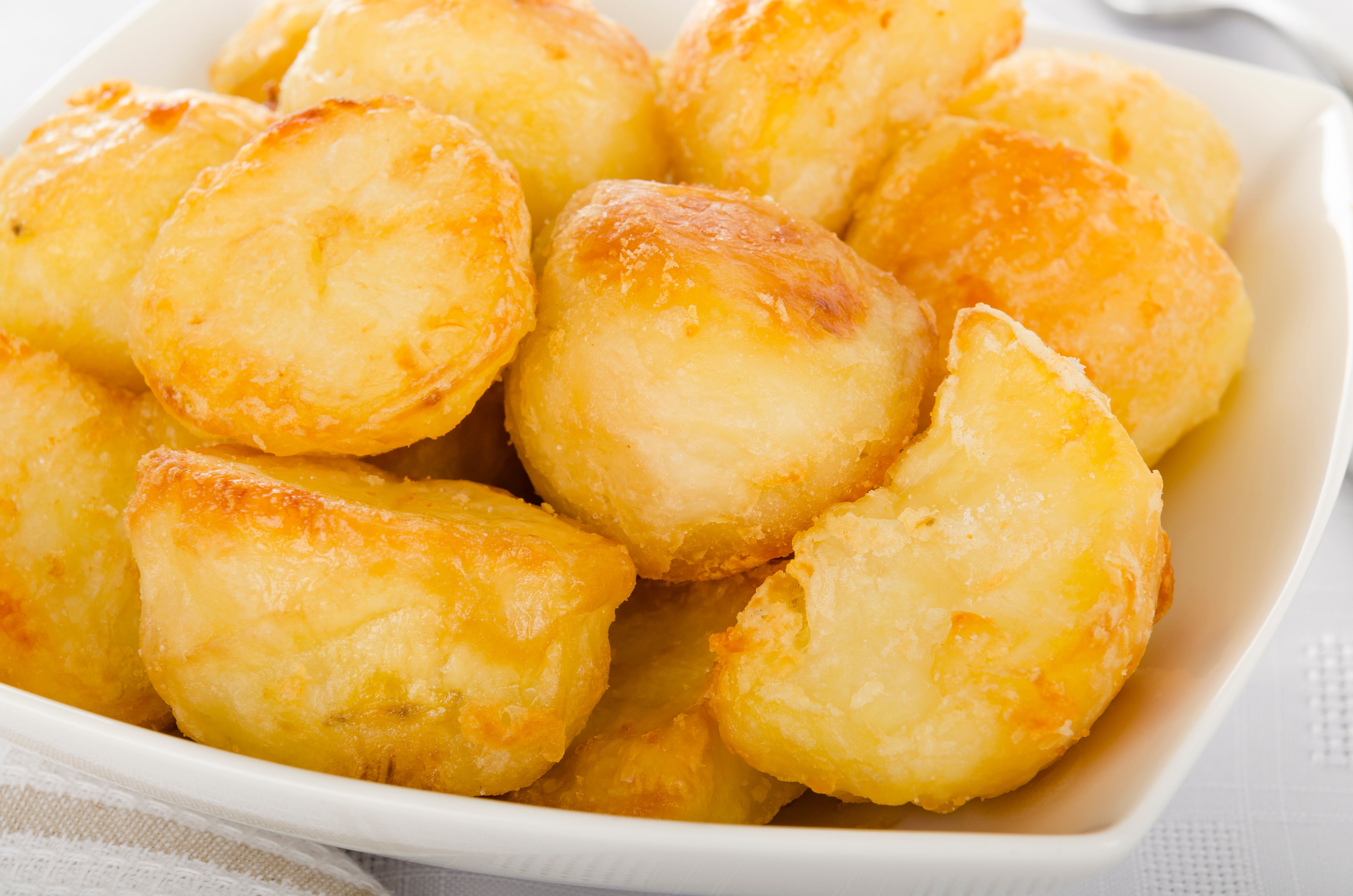How to cook the perfect roast potatoes this Christmas, according to chefs
This guide from the Great British Chefs will ensure you have the perfect roasties this Christmas

Your support helps us to tell the story
From reproductive rights to climate change to Big Tech, The Independent is on the ground when the story is developing. Whether it's investigating the financials of Elon Musk's pro-Trump PAC or producing our latest documentary, 'The A Word', which shines a light on the American women fighting for reproductive rights, we know how important it is to parse out the facts from the messaging.
At such a critical moment in US history, we need reporters on the ground. Your donation allows us to keep sending journalists to speak to both sides of the story.
The Independent is trusted by Americans across the entire political spectrum. And unlike many other quality news outlets, we choose not to lock Americans out of our reporting and analysis with paywalls. We believe quality journalism should be available to everyone, paid for by those who can afford it.
Your support makes all the difference.The classic roast potato is a staple at any Christmas dinner, which means there is a lot of pressure to get them perfect.
It was Queen Victoria who first introduced the potato to the Christmas menu, although at the time they were eaten mashed rather than roasted.
These days everyone has their own roasties recipe, but what is the perfect roast potato and how do you cook it?
According to Nigella Lawson, the perfect roast potato is “sweet and soft inside and a golden-brown carapace of crunch without.”
Getting that perfect crunch can seem complicated, but don’t fret. For those unsure about parboiling, struggling with vegan guests or stuck at which potatoes to use, we spoke to the experts to get some tips.
This is what chefs do to create the perfect roast potato.
Which type of potato is best?
According to Jamie Oliver, the best variety of spud for a roast potato is the King Edward or Maris Piper.
Both are floury and high in starch, which means they will give a really light and fluffy centre once cooked.
Preparing the potatoes
There are a few steps you need to consider before the potatoes hit the oil.
Firstly you should cut them to size, and Lawson advises going on the smaller side, “so that the ratio of crunchy outside to fluffy interior is optimised.”
Secondly, you need to parboil the potatoes.
To do this, simply put the potatoes into salted, cold water in a saucepan, and bring to a boil, letting them cook for 4 minutes. Then drain away the excess liquid and sprinkle with flour.
Lastly, take time to ‘chuff’ your parboiled potatoes by tossing them in a colander to roughen the edges.
According to Jamie Oliver, this will allow more fat to crisp up around the surface of your potatoes.
What type of fat is best for that signature crunch?
Most chefs recommend goose fat for the ultimate in luxury, and to use it properly Lawson advises you heat it first.
She adds: “If it’s not searingly hot, you don’t stand a chance, and since goose fat has a very high smoking point and tastes good, it is my annual choice here.”
If you or your guests are vegan or vegetarian, leading registered nutritionist Rhiannon Lambert suggests using either vegetable stock or rapeseed oil – which is a good source of healthy fats, omega 3s and Vitamin E.
She tells The Independent: “From a cooking perspective, rapeseed oil has a neutral flavour, is inexpensive, and has a high smoke point which means you can get the potatoes really hot before popping them in the oven. That way they'll go nice and crispy on the outside.
“Alternatively you could use a vegetable stock. Simply cut your potatoes and then add them to a tray with your preferred stock and roast in the oven until they are soft on the inside.”
How long should they roast for?
While some chefs prefer a long roast, others go for a shorter cooking time at a higher heat.
Lawson advises: “If the oven’s hot enough, they may well not need more than about 25 minutes a side; but it’s better to let them sit in the oven till the very last minute - you can always pour off most of the fat.”
She also adds that you should keep your potatoes in a single layer on the roasting tray – even if this means roasting a second batch – as they won’t crisp up if they’re layered on top of each other.
Serving the spuds
When everything else is served up, transfer the potatoes to a large (and warmed, if possible) serving dish – then bask in the joy of your perfect potatoes!
You’ve earned it.
Tips and tricks
Of course, everyone has their own tips when it comes to the perfect roast potato, but Lawson admits she dredges the potatoes in a semolina rather than flour after parboiling.
She adds: “This is a family practice, inherited through the maternal line. Once the semolina is added, really rattle the pan around to make the potatoes a bit mashed on the surface so they catch more in the hot fat.”
While Jamie Oliver suggests taking your roasties to the next level by adding a couple of extra flavours to the mix.
He says: “A dash of balsamic or red wine vinegar, from a spray-bottle, in the final few minutes of roasting will deepen the flavour and add a deliciously subtle tang.”


Join our commenting forum
Join thought-provoking conversations, follow other Independent readers and see their replies
Comments